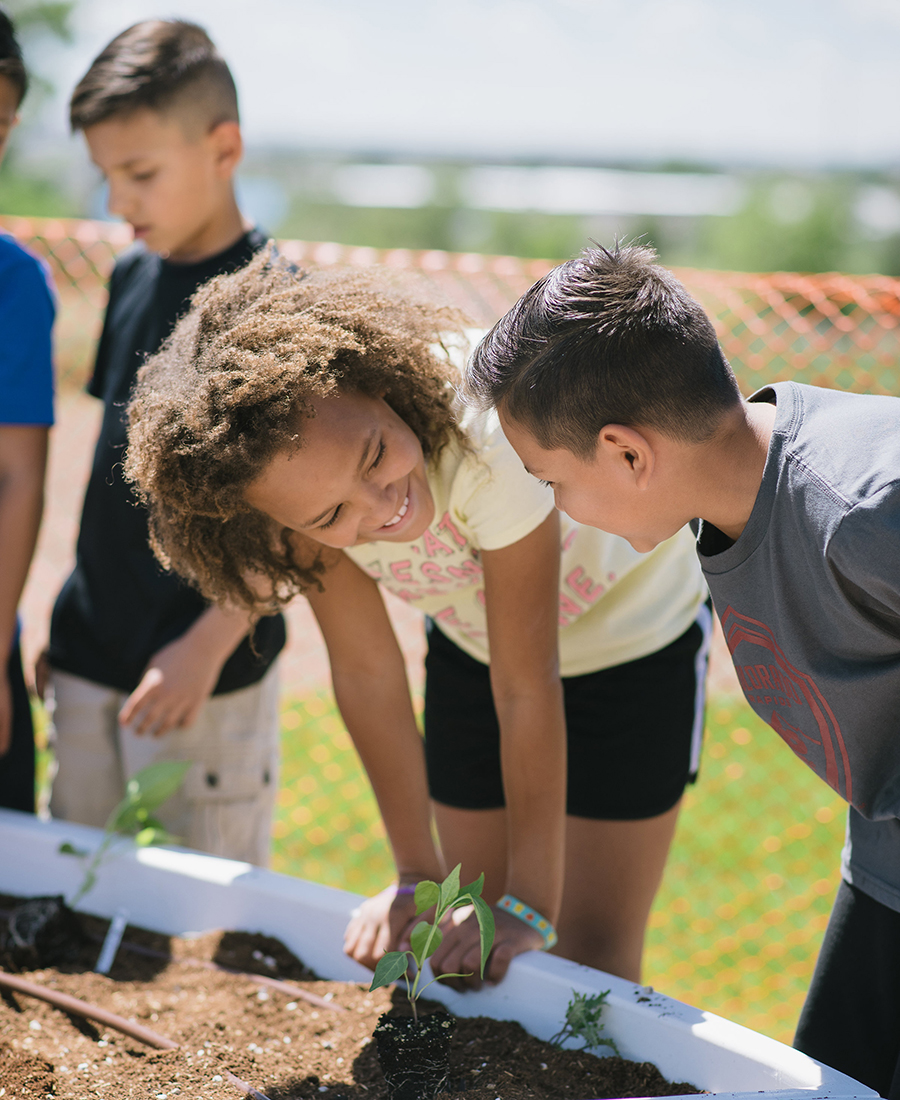Home > Colorado > Colorado Ag Education > Big Green Connects Kids to Fresh Food and Farming
Big Green Connects Kids to Fresh Food and Farming
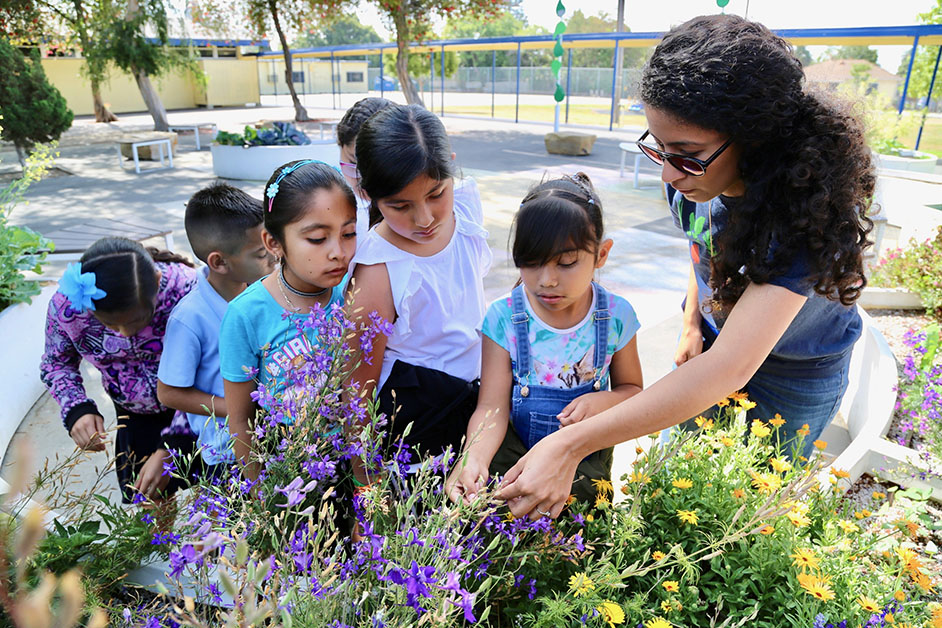
Growing up on the East Coast, Tighe Brown has memories dating back to her early childhood of watching her mom and dad cook meals in the kitchen – pasta and meatballs, steak and potatoes. Food was a love language for her family, which included her three siblings, yet something was missing.
“My parents did such a great job of gathering us around the table and teaching us how to share food,” says Brown, “but not about how to grow our own food or the importance of vegetables in your diet.”
Today, Brown draws on her own personal childhood experience and her evolution toward eating lots of fresh fruits and vegetables in her daily life as president of Big Green. She joined the Colorado-based nonprofit organization nine years ago, shortly after it was founded by Kimbal Musk and Hugo Mathson with the goal of connecting kids to food through outdoor classrooms.
 “I was immediately interested in how we could get more people to get connected to food, similarly in the way I had experienced,” shares Brown. They developed a concept called Learning Gardens. The gardens features modular raised beds that not only provide space to grow fruits and vegetables but also seating and shade to encourage lingering. Standing 19 inches tall (the ideal height for young children), the Learning Gardens were first implemented at schools around Boulder and have since grown to more than 600 schools around the country.
“I was immediately interested in how we could get more people to get connected to food, similarly in the way I had experienced,” shares Brown. They developed a concept called Learning Gardens. The gardens features modular raised beds that not only provide space to grow fruits and vegetables but also seating and shade to encourage lingering. Standing 19 inches tall (the ideal height for young children), the Learning Gardens were first implemented at schools around Boulder and have since grown to more than 600 schools around the country.
See more: How the Detroit School Garden Program is Teaching Michigan Students
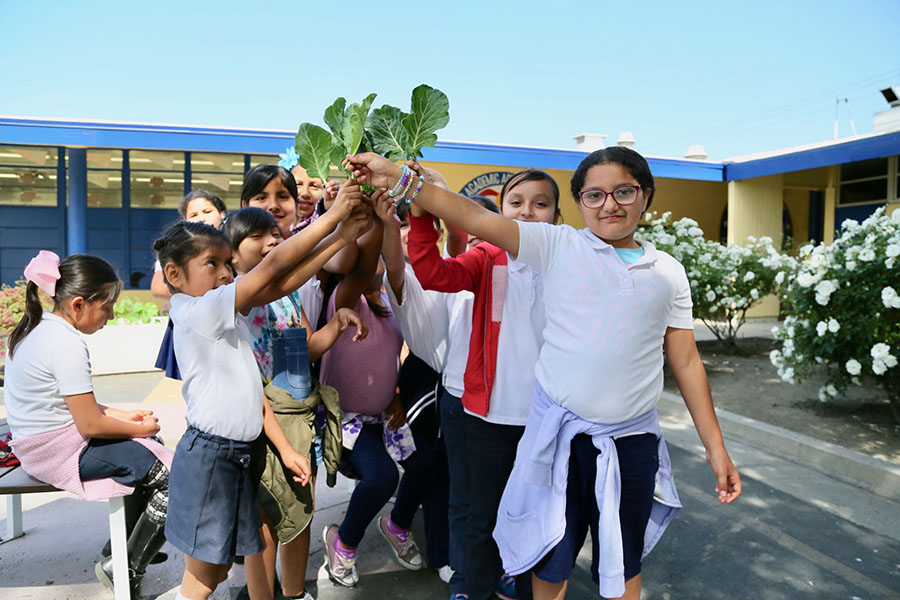
Cultivating a Healthier Nation
Big Green focuses on working with underserved schools in mid-sized urban cities with the mission of building a healthier nation for children. “We partner not to build one school site, but to look at what it would fundamentally take to shift the district’s food culture,” says Brown. The nonprofit commits to building 50 to 200 Learning Gardens in schools in each city (they’re currently in Denver, Los Angeles, Chicago, Indianapolis, Detroit, Pittsburgh and Memphis), then works with each school on a one-on-one basis to integrate the gardens into teaching programs.
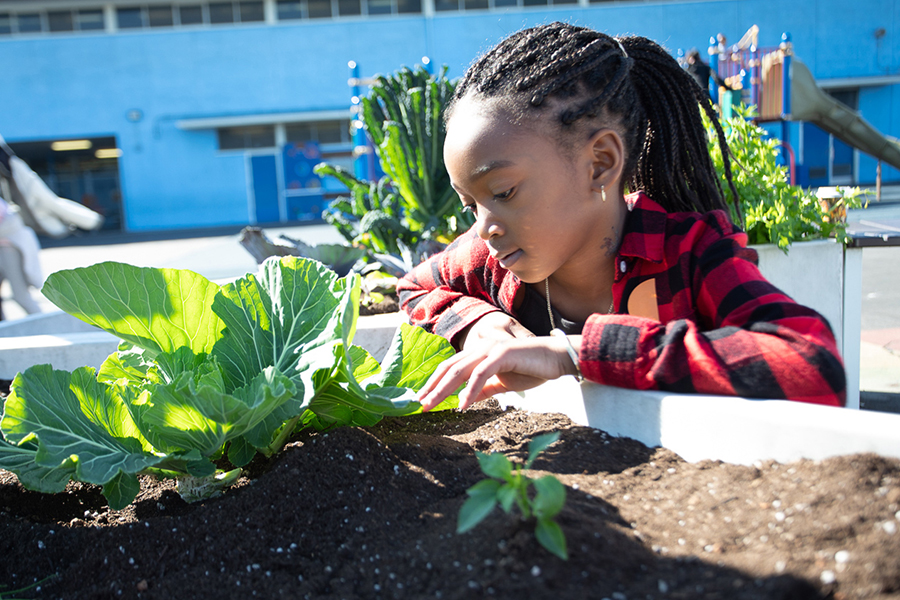
From a teacher’s perspective, the Learning Gardens serve as outdoor classrooms. A major benefit of the gardens is that they often allow students who don’t thrive in traditional classroom environments to really shine, says Brown. For example, at a school in Memphis, a teacher shared that a young boy who’s normally very shy and quiet becomes “his true self” in the garden, exuding confidence and positive behavior, she adds.
See more: Ohio Department of Agriculture Plans to Grow Farm to School Program
Amanda Scampini-Hansing, a teacher at a Learning Gardens school, Peck Elementary in Chicago, says she’s already noticed the program making an impact on students’ eating habits. At an end-of-year party, they served salads made from lettuce grown in the garden. “One student was so excited to tell [his mom] that he loved lettuce, which surprised her since he wouldn’t eat any at home,” says Scampini-Hansing. “Seeing where his food had been grown made all the difference.”

The organization installs Learning Gardens in diverse regions, so Big Green takes care to help teachers utilize each garden to be as successful as possible in its respective climate. All schools are able to do a 30-day salad program in the spring, in which the students plant, care for and harvest ingredients to make a salad within a month’s time. Some cities might be able to keep certain plants such as radishes in the ground longer to mature, or grow fruits specific to their region when conditions allow.
In addition to growing, the Learning Gardens offer opportunities for tasting activities for kids, serving as encouragement to eat healthy fruits and vegetables – even for the pickiest young eaters.
See more: The Best Tennessee Farms for Teaching Children About Agriculture
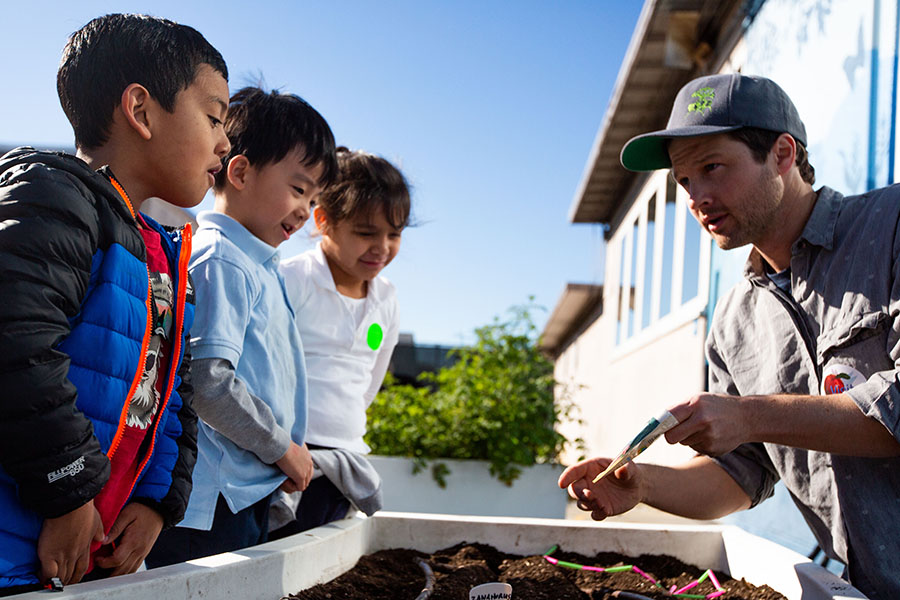
“When they plant the seeds in the ground, grow the plant and see it being picked, they want to stand in the garden and try eating it,” says Brown. “Most students say yes [to trying new things] because they’ve put in the time and energy toward growing that plant.”
Other activities include salad days in school cafeterias, where all the lettuce served comes from a Learning Garden, or parents’ nights where kids showcase what they’ve grown by preparing a special dish. One end goal for Big Green is instilling healthy habits in children, which in turn can help reduce the rate of chronic, diet-related disease in the U.S., says Brown.
See more: Virginia Programs Take the Farm to School
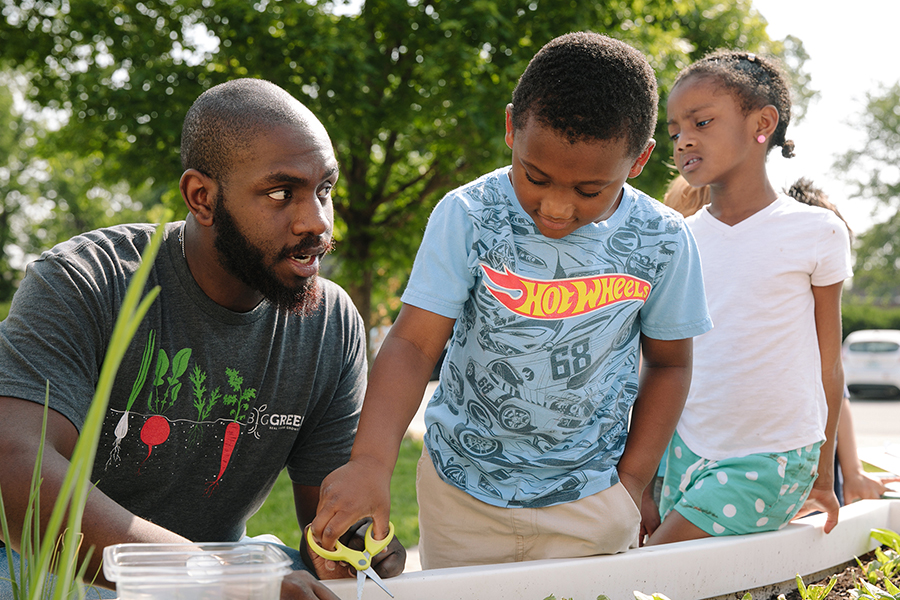
“If children start in kindergarten learning about fruits and veggies and evolve that with health and nutrition curriculum as they grow up, that can help influence habits they’re making early in life – and lead them to lead healthier, more productive lives long term,” says Brown.
Equally as important to Big Green is implanting a sense of awareness, respect and appreciation for American agriculture, and working to ensure the cycle of food is a key part of the curriculum in schools. The organization started Plant a Seed Day in 2019 (scheduled for March 19 in 2020) to spotlight the importance of growing your own food. This year, it aims to have 500,000 pledges from individuals to plant their own seeds across the country, giving children and adults everywhere a great reason to dig in the dirt.
See more: New Mexico Gets More Local Food on School Lunch Trays
Working with kids, their parents and their teachers, Big Green’s educational Learning Gardens and programs provide not only food but also food for thought. Kimbal Musk’s personal mission – real food for everyone – holds true and serves as the basis for growing the company, one school at a time.
